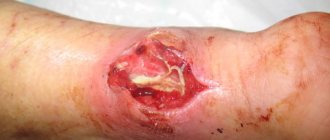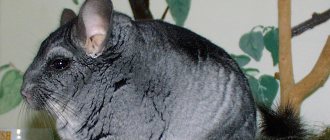Causes of seals
It is very sad when a small creature develops tumors. Moreover, they can be of different sizes - from a barely noticeable bump to a huge tumor. Veterinarians say that female Djungarians suffer from this disease much more often than males and representatives of other breeds. This is associated with their reproductive characteristics.
In general, Djungarian hamsters are quite susceptible to diseases; they suffer from viral diseases more often than other breeds. Scientists have long put forward a viral theory of cancer; perhaps it extends to small rodents. The question of what provokes the occurrence of tumors in hamsters has not yet been fully clarified.
However, the reasons for compaction on the body of small animals may be:
- bruises and fractures;
- local reproduction of viruses;
- poor nutrition;
- inflammatory process;
- congenital pathologies.
Since the reasons for the appearance of lumps vary, the types of tumors will also be different.
Parasitic, fungal, dermatological diseases and symptoms
Hamsters, regardless of breed, often suffer from parasitic and fungal diseases. Djungarians are diagnosed with lichen, dermatophytosis, and trichomoniasis. The main manifestations of mycoses are severe itching, restlessness, deterioration of the coat, the appearance of rashes on the body, scratching, wounds, and long-term non-healing ulcers. With dermatophytosis, the skin acquires a yellowish tint and is very flaky. If treatment is not started, pathogenic flora penetrates into wounds and scratches, which provokes inflammation in various structures of the dermis.
Important! If a hamster is sick with a parasitic or fungal disease and is kept in the same cage with other rodents, immediately isolate the sick animal and disinfect the pet’s home.
Hamsters are susceptible to dermatitis, dermatoses of various etiologies, as well as allergies. Deterioration in the condition of the coat, partial or complete baldness is provoked by frequent stress, deficiency of vitamins, minerals, external parasites, fungi, and substances of a toxic nature.
Your veterinarian will tell you how to treat mycoses. The pet will be prescribed fungicidal, antibacterial agents, solutions (Miramistin, Chlorhexidine), as well as antiparasitic shampoos.
Types of tumors
Depending on their location, bumps can be external (on the skin and subcutaneous tissue, limbs) and internal (uterine, intestinal tumors).
Based on how neoplasms develop, they are conventionally divided into 3 types:
- Benign. Caused by unlimited cell division, which can be triggered by injury, a virus, or a malfunction of the genetic program. Such neoplasms are usually stable and look like small subcutaneous balls. If you lightly press on the lump, it moves to the side. The density of a benign tumor in hamsters can be anything: hard, soft, or cartilage-like. Such lumps must be removed before they develop into mixed and then malignant neoplasms.
- Malignant. They can develop immediately or gradually change from benign. Malignant cells divide extremely quickly and in all directions; they are not localized, so they metastasize to various organs of the animal. Due to metastases, it is almost impossible to defeat the disease. The occurrence of malignant lumps may be due to viruses, poor nutrition (the carcinogenic effect of fats) or violations of the genetic program.
- Inflamed tissue. The swelling is not caused by cell division and tissue proliferation, but by other factors. This may be an accumulation of pus (abscess) or lymph in certain areas of the body.
In hamsters, inflammatory processes and benign neoplasms are treatable. A malignant tumor manifests itself already in the later stages of the disease, when the “frenzied” cells have already spread throughout the body. Therefore, cancer for a hamster is a death sentence.
This is what a cancerous tumor on a hamster's stomach looks like.
Localization of neoplasms
Tumors in hamsters can grow anywhere. And the sooner you find it, the higher the chance of saving the fluffy. Therefore, periodically inspect and carefully feel the tiny body. Here are the most common places where a lump can grow:
Internal cancer clusters are almost impossible to detect in the early stages. Therefore, let's pay attention to the external inspection.
Bumps on the head and neck
Viral and bacterial infections provoke inflammation of the cervical lymph nodes in hamsters. This condition is painful, it causes a plaintive squeak in the dwarf. But the pet does not always give a signal to the owner that he is unwell. What symptoms indicate that a tumor in a hamster's neck is causing him discomfort? Firstly, the pet will eat very little, as it hurts to swallow. Secondly, you will notice that he is trying not to turn his head. Having noticed these signs, touch your pet’s neck on both sides under the cheekbones: the inflamed lymph nodes feel like hard balls.
Often, a thickening similar to gumboil appears on the hamster’s face. A tumor on a hamster's cheek indicates inflammation of the oral cavity. This condition can be provoked by too hard food with jagged edges that scratch its cheek pouches (which is why fluffies should not be given fruit tree seeds). Pathogenic bacteria actively multiply in the wounds, causing such severe inflammation that the cheek swells. Sometimes the cheek is so badly damaged that the homa cannot open his eyes.
The photo shows how the hamster's cheek is swollen.
Sometimes animals suffer from eye problems. Conjunctivitis is characterized by suppuration of the eyes and a burning sensation. The hamster keeps trying to scratch his eyes, making the situation worse. If a hamster's eye is swollen, then its owners are to blame. Bedding in a cage that has not been changed for a long time is the surest source of pathogenic bacteria that cause conjunctivitis.
Paw diseases
If your pet is handled carelessly, he may suffer a fracture, bruise or dislocation. True, the owners are not always to blame for the animal’s injuries. He himself is capable of injuring himself by unsuccessfully jumping from the second tier of the cage. Therefore, if your hamster's paw is swollen, a veterinary examination should be performed.
But it’s not only trauma that can cause swelling of a limb. Sometimes furry cats get osteosarcoma, a viral disease that causes bone tissue to grow and surrounding areas to swell. At first, the animal becomes inactive, and the affected limb swells in a matter of days. Inflammation covers the entire limb, then spreads to the torso. Unfortunately, this viral disease has no cure yet.
A slight swelling on the animal's toes may be caused by a splinter. Therefore, veterinarians do not recommend using small sawdust as bedding.
Tumors on the trunk
Sometimes rodents develop tumors on the ventral side of the body. It has been established that tumors in a hamster’s abdomen are more often localized in the mammary glands. The disease is more typical for sexually mature females and can be benign or malignant. Since this is not an intracavitary neoplasm, it can be removed.
Papillomas may appear on the animal’s stomach and armpits. The proliferation of skin tissue is caused by the activity of viruses. The skin disease develops gradually: first, tiny tubercles appear, which over time turn into benign growths similar to warts. If they are not removed, they can grow up to 2 cm, and for the small body of a hamster this is a very noticeable size.
Swelling may also appear under the tail. Many upset owners bring their little one to the veterinarian and complain that the hamster’s butt is swollen and fur has come out in this place. And then they rejoice when the doctor assures them that their pet is a boy, gradually turning into a man. But if Khoma is already old enough, and his butt suddenly starts to swell, it’s still worth going to the doctor. Even hamsters are not immune to testicular cancer.
Treatment
Some bumps are painless for your pet, but that doesn't mean your pet doesn't need to be treated. What to do if you find strange bulges? Of course, consult your doctor.
An ordinary veterinarian can easily recognize eye diseases and prescribe antibiotic treatment. If a hamster has a lump on its neck, it will also not be difficult for him to diagnose inflammation of the lymph nodes. The veterinarian is also able to open the abscess, remove accumulated pus from the wound and treat it.
But with more serious illnesses, you will have to contact a specialist with a narrow profile - a ratologist. This doctor deals exclusively with rodents, examines and makes a diagnosis. One problem: not every city offers appointments with this specialist.
After diagnosis, treatment or surgery is prescribed. If a hamster's cheek is swollen, the doctor will examine the pet's oral cavity, remove foreign objects (possibly embedded in the cheek), and treat the inflamed areas with an antibacterial drug. Usually after the procedure, the swelling subsides within 1-2 days.
If your hamster's butt is swollen but it is not due to puberty, surgery may be necessary. The same situation is with diseases of the mammary glands. Not long ago, operations to remove uterine tumors in rodents became possible. But malignant neoplasms have never been treated. The most humane thing to do is to euthanize an animal with cancer so that it does not suffer.
Eye diseases and their treatment
Small animals often suffer from ophthalmological diseases. Allergic, serous, purulent conjunctivitis, cataracts, glaucoma, and uveitis are noted in hamsters. In these diseases, blepharospasm, lacrimation, swelling, swelling, and sticking of the eyelids are observed.
Treatment should begin immediately as soon as you notice the first symptoms. Do not forget that eye diseases can provoke not only a deterioration in visual function, but also cause complete or partial blindness.
In medical therapy, the choice of methods depends on the stage, nature of the disease, and the root cause. Solutions for washing the eyes and ophthalmic drops may be prescribed.
Prevention
Preventive measures cannot fully guarantee protection against cancer and other diseases, but the risk of disease is reduced many times over. To protect your cute animal, follow these rules:
- Clean the cage and wash it often, this will reduce the population of pathogens.
- Do not allow rodents to mate frequently if you have a married couple living with you. Remember that childbirth significantly undermines the body's defenses.
- Do not feed animals fatty foods.
- Take care of your animal's immunity. Fresh herbs and vegetables are great for this purpose.
Following these recommendations will have a good effect on the mood and health of the furry, prevent the occurrence of infectious diseases, and reduce the risk of tumors.
At the first symptoms of the disease, you should not self-medicate, but run to the doctor. Timely diagnosis and therapy will help cope with a number of diseases, but if your furry friend is diagnosed with cancer, you will have to come to terms with it.
Abscess in a hamster
The main symptom of the presence of an abscess formation on the pet’s body is swelling in the neck area, as well as other parts of the body. Other symptomatic manifestations include:
- deterioration of general condition;
- decreased appetite;
- matted wool;
- salivation;
- the presence of purulent discharge from the eyes;
- protrusion of the eyes.
If at least a few accompanying symptoms occur, it is worth showing the baby to a specialist from a veterinary clinic. If diagnosis is not carried out in time, the condition of the baby can be brought to the point where he will require surgical intervention. And given the small size of the animals and their weak heart, it is possible that such an operation will end in death.
Causes
An abscess in a hamster develops for various reasons. The main ones are:
- bites received during fights;
- scratches resulting from collisions with sharp corners of accessories installed in the home;
- wounds from injections on sharp corners.
The skin of the hamsters is damaged, and given the fact that the cage is not frequently cleaned, as a rule, an infection gets into a small wound, which then becomes an abscess formation. Often the fur and skin at the site of its development are damp, since pus may leak from the wound, which a clean animal will definitely lick.
How to treat?
Before starting treatment, you should pay attention to the condition of the place where the abscess has formed. If it is not very red and slightly swollen, surgery will most likely not be required. Timely administration of antibiotics, blockade drugs and the like will prevent the abscess from developing and will lead to its complete resorption.
If the tumor is too large and stands out on the pet’s body, you should immediately contact a veterinary clinic. Such abscesses are opened, cleaned out, and often removed along with the capsule, like malignant tumors. In addition, the baby may need drainage installed, which is not possible to do at home.
When the owner notices that the abscess formation has burst on its own in a short period of time, it is worth treating the wound with furatsilin, hydrogen peroxide and trying to cut off the hair around it. In any case, consultation with a specialist is necessary, if only for the reason that it is necessary to exclude blood contamination by pathogenic microbes, the development of which can lead to death.
How to prevent it?
To prevent the formation of abscesses in individuals of the hamster order, it is enough to keep them in different cages. The absence of fights will have a beneficial effect not only on the physical well-being of pets, but also on the mental well-being. It is also important to ensure that the accessories located in the cage do not have sharp corners. Naturally, finding such ones will not be easy, but it is better to prevent the occurrence of wounds and scratches on the skin of animals than to treat them afterwards.
Neoplasms in hamsters
Considering the topic of hamster diseases, we generally mentioned neoplasms and tumors in these pets. But the increasing frequency of your requests to us regarding the fact that a tumor has formed on the hamster’s stomach, face, or paw, prompted us to describe this problem in more detail.
The article will be useful not only to those who have already encountered this problem, but also to all hamster breeders, since according to veterinary statistics, every 10 hamsters over a year old are diagnosed with tumors and neoplasms. And it’s not always possible to save babies...
Symptoms of diseases
How can you tell if your hamster is sick? This question interests many breeders of small pets. A healthy hamster has beautiful shiny fur, leads an active lifestyle, especially at night, and shows interest in the world around it. The animal eats food with appetite, makes supplies, and arranges its home. The Djungarian, the Syrian, has clear, clean eyes and an expressive gaze.
Important! You can understand that a rodent is sick not only by external signs, but also by the changed behavior of the hamster.
Main symptoms of diseases:
- decreased activity, lethargy, apathy;
- deterioration of fur condition (wet fur);
- severe itching;
- the appearance of scratches, bald patches, wounds, ulcers on the body;
- discharge from the nose, eyes;
- increased thirst;
- allergies, skin rash;
- bowel dysfunction (diarrhea, constipation);
- frequent urination;
- pallor, cyanosis of mucous membranes;
- sticky eyelids;
- the presence of blood and clots in the urine;
- disturbance of breathing, heart rhythm;
- accumulation of wax and dirt in the ears;
- yellowness, peeling of the skin;
- loss of cheek pouches;
- impaired coordination of movements;
- boils on the body.
In case of injuries or sprains, the hamster limps, sits constantly in the house or hides in the corner of the cage. The rodent loses a lot of weight or, on the contrary, gains weight and gains weight too quickly.
Advice! Take a good look at your pet's home. If a hamster suffers from indigestion, cystitis, or endocrine pathologies, an unpleasant specific odor appears, the feces will be liquid, and the space will be filled with excrement.
If the hamster has lost weight, refuses its favorite treats, has watery eyes, swollen eyelids, the pet has become inactive, shows aggression, is breathing frequently, or other symptoms uncharacteristic of a healthy animal are noticeable, you should not ignore the problem.
If your dwarf or Syrian hamster is sick, do not self-medicate. If you discover that the rodent is sick, take it to the veterinary clinic or call a veterinarian at home. The choice of treatment methods depends on the root cause that provoked the soreness.
Types of tumors in hamsters
Neoplasms in hamsters can be of a very different nature and type. First of all, they are divided into malignant and benign.
Benign tumors in rodents
In this case, the structure of the tumor tissue is very similar to the structure of the tissue on which the tumor grows. The appearance of a benign tumor can occur as a result of injury, inflammation, disruptions in the body, or poor nutrition. Find out what to feed your hamster.
Malignant tumors in rodents
But a malignant tumor consists of already degenerated cells of the body. Such tumors grow very quickly. And when we talk about them, we, unfortunately, mean cancerous tumors, sarcomas, carcinoma and other types of tumors that penetrate in various directions into nearby tissues. Even human medicine is unable to defeat this enemy, and veterinary medicine, unfortunately, is neither. The difficulty of treatment lies in the fact that malignant neoplasms do not have capsules and give metastases, that is, from the site of tumor growth, cells with lymph and blood flow are transported throughout the rodent’s body and the neoplasms appear in other parts of the pet’s body. The hamster loses his appetite, he may have an unpleasant odor, he becomes passive, and he experiences digestive disorders.
What does a healthy hamster/chipmunk look like?
A pet that does not have a pathology is active, mobile, shows interest in everything that happens around and has an excellent appetite, stuffing its cheek pouches with food in reserve.
The eyes are beady, moist and clean, without discharge or pathology. The animal is well-fed (not obese!) and covered with smooth shiny hair without signs of damage to the integrity of the skin and the presence of parasitic lesions (lice, fleas, ticks, pathogenic fungi).
A healthy pet has well-formed, regular stools and urination that are free of blood or mucus. Normally, there is no discharge from natural orifices. The teeth have a bright orange hue and are long enough to capture and process food. Good health is indicated by a desire to communicate with other pets or with the owner.
Frequent neoplasms in hamsters
Papillomas in hamsters
In this position it is most convenient to examine the hamster's stomach.
And although in the standard understanding papillomas are dense neoplasms of various sizes, they can even have a thin stalk and look like a wart, they are also typical for rodents and are classified as benign types of tumors. But the appearance of papillomas can be caused by... a virus. A hamster can become infected with the virus as a result of contact with a sick relative, with skin damage, or after an insect bite. The disease does not immediately manifest itself; it takes from 1 to 3 months. So, from the very beginning you can bring an infected animal from the pet store.
Having penetrated the skin of a rodent, the virus provokes enhanced growth processes of the epithelium - the skin layer where the cells covering the skin of the hamster are closely located. The virus penetrates the connective tissue and provokes cell proliferation there too. Owners notice that their pet's skin in the neck and shoulders has become thicker than usual. But, after 4-5 days, tiny tubercles become visible on it (if you part the fur), and as they grow, they can merge with each other and turn into keratinized, warty formations. They can be up to several centimeters wide and rise above the skin up to 1 centimeter. Where papillomas grow tightly together, skin necrosis occurs. However, despite such strong external changes, the virus does not have much effect on the general condition of the hamster; it is still active, plays, eats and sleeps. But the disease needs to be treated.
Of course, for this it is better to contact a veterinarian whose specialty is treating rodents. Even without conducting tests, by the appearance of the hamster’s skin he will be able to determine whether it is papillomas or not.
After this, treatment will be prescribed, depending on the severity and extent of the disease. As a rule, treatment of papillomas in hamsters involves applying a special paste to damaged areas of the skin. A bandage or collar is placed over the paste to prevent the rodent from licking the paste.
Often, veterinarians themselves advise the owners of their patients another method. Prepare a decoction from potato peelings and use it to treat the damaged skin surface. This treatment method is especially effective for papillomas with thin stalks and a small area of growth. From potato broth they dry out well and fall off on their own. You can also lubricate them with dandelion root juice, garlic juice or celandine juice.
If the veterinary clinic has a special vaccine prepared from the tissues of such neoplasms, you can inject it into the rodent.
Osteosarcoma in rodents
As a result of an oncogenic virus entering the rodent’s body, one of the sick hamster’s limbs is affected. He begins to limp slightly on it, and the paw itself swells and swells. At an advanced stage of the disease, the swelling can be very large, even spreading to the pet’s body. The limb itself is no longer visible; it is hidden under edema and swelling. Most often, hamsters die, since treatment for osteosarcoma has not been developed for them, and the survival rate is very small.
Mammary tumors in hamsters
These tumors are located on the abdomen of the hamster and can be either benign or malignant. Veterinary statistics say that
up to 94% of cases of requests for tumors in the abdominal area are associated specifically with tumors of the mammary glands and in most cases they are benign.
But, despite this, they should still be removed, since in the future the tumor cells can degenerate. It is very difficult to find specialists who will undertake surgery on a hamster, so most often rodents continue to live with a tumor. Drug treatment, external compresses, and ointments are ineffective in this case.
Surgical intervention
If a tumor is detected in your pet, you must take a risk and agree to surgical removal. The formations in rodents grow rapidly, the skin cannot withstand it and bursts, forming a fetid, non-healing ulcer. The tumor mass prevents the animal from moving; sometimes the hamsters themselves try to chew off the foreign tissue and die from blood loss. If a limb is affected by cancer, amputation is the best option. If the tumor is on the body, it must be removed while it is still small, otherwise it will be difficult for the surgeon to close the skin defect after removal.
The use of inhalation anesthesia in recent years has increased the survival rate of rodents after surgery. The doctor must have experience working with rodents and ensure that the tiny organism does not become hypothermic during anesthesia. A starvation diet before surgery is not prescribed, and is even harmful.
Removing the tumor itself will not cure the hamster; it will remain sick and may die from tumor metastases to other organs (lungs, liver). But it can improve the quality of life.
If internal organs are affected by cancer, one can only guess about this by the symptoms or asymmetry of the abdomen. In this case, the operation does not make sense and the operation comes down to euthanasia on the surgical table.
What to do if you find a tumor in your hamster
If you suspect a tumor, contact your veterinarian
If you notice that a tumor or lump has formed on your hamster’s body, face or limbs, do not put off a visit to the veterinarian.
Considering the weak organism of these creatures, their small size and aggressiveness of viruses, it is not difficult to guess that hamster diseases are fleeting in nature, and even in the case of a benign tumor, sometimes it may be too late to change something.
A specialist will examine your pet, take tests if necessary and make a diagnosis. Depending on it, treatment will be prescribed.
Trying to treat a tumor on your own is not a good solution. You can only consider it if there is no way to contact a veterinarian, or if there are no specialists with the necessary qualifications. Often such young patients are simply refused to be treated, but it is worth a try.
Treatment may include taking antibiotics, viral drugs, or using external agents, but they must be prescribed by a veterinarian.
Positive video about rodents to cheer you up
Today we looked at the types of tumors in hamsters and the most common diseases associated with neoplasms. We hope that you will not have to face these ailments. However, the older your pet is, the greater the risk of developing tumors he gets, and you must be prepared for this.
If you have any questions about this topic, ask, share with us your stories, and, of course, photographs of your rodents. You can post them in our VKontakte group.
We are waiting for your feedback and comments, join our VKontakte group!
Ear infection (of the middle ear) with a cystic growth in the tympanic cavity Large swellings on one or both sides of the head, similar to a brain tumor - but unlike tumors, these growths fill with pus, then shrink in size and form scabs, and may have an unpleasant odor . Gradually it can be cured, but soon the disease recurs (repeats). How to treat a hamster in this case? An antibiotic (baytril) should be applied immediately after the formation of growths, because it is easier to kill an infection in them than in the ear (the complex location of the infection makes antibiotic treatment difficult).










